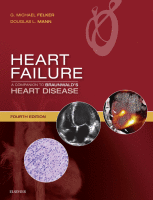Physical Address
304 North Cardinal St.
Dorchester Center, MA 02124

What Is Human Immunodeficiency Virus-Associated Heart Failure? As antiretroviral therapy (ART) has become widely adopted, acquired immune deficiency syndrome (AIDS)–defining infections and malignancies have become less common, and the burden of chronic noncommunicable diseases has increased. Parallel to this transition,…

Heart Failure: a Global Perspective At any one time it has been estimated there are approximately 26 million cases of heart failure globally. Although many of these cases reside in the developing world, our understanding of heart failure is largely…

In the attempt to diagnose heart disease more accurately, the term myocarditis is wisely being abandoned in large part; we must remember, nevertheless, that there does exist such a condition as myocarditis . . . . Paul Dudley White Dr.…

Adults with congenital heart disease (CHD) have multiple mechanisms placing them at risk for heart failure, leading one author to refer to CHD as “the original heart failure syndrome.” These mechanisms include chronic pressure and/or volume loading, inadequate myocardial preservation…

Valvular heart disease (VHD) is not simply a disease of the valve. 1,2 Cardiac valves are the major determinants of the direction of blood flow in the circulation that consists of a system of vessels that distribute and collect blood,…

Introduction: Definition and Impact Hypertension (HTN) affects over 1 billion people worldwide and is the most prevalent risk factor for the development of heart failure. Despite some improvements in the treatment and control of HTN, the societal burden of hypertensive…

The genetic contributions to heart failure are numerous and remarkably heterogeneous, extending from the monogenic forms of cardiomyopathy to more common polygenic diseases, such as hypertension, coronary atherosclerosis, and myocardial infarction. For monogenic diseases, the responsible mutations are rare but…

Overview Henri Liouville, a French pathologist, described the first case of hypertrophic cardiomyopathy (HCM) in 1869. The patient was an elderly woman with symptoms of heart failure, a ventricular wall thickness of 3.5 to 4 cm and left ventricular outflow…

Amyloidosis is a deposition disease in which proteins with unstable structures misfold and aggregate into amyloid fibrils, which deposit in the heart, kidneys, liver, peripheral nerves, gastrointestinal tract, lungs, and soft tissues. Amyloid fibrils are insoluble nonbranching structures 7 nm…

Restrictive cardiomyopathy is the least prevalent of cardiomyopathies relative to dilated ( see Chapter 20 ) and hypertrophic forms ( see Chapter 23 ) of heart muscle diseases. All forms of cardiomyopathy are diseases of heart muscle that result from…